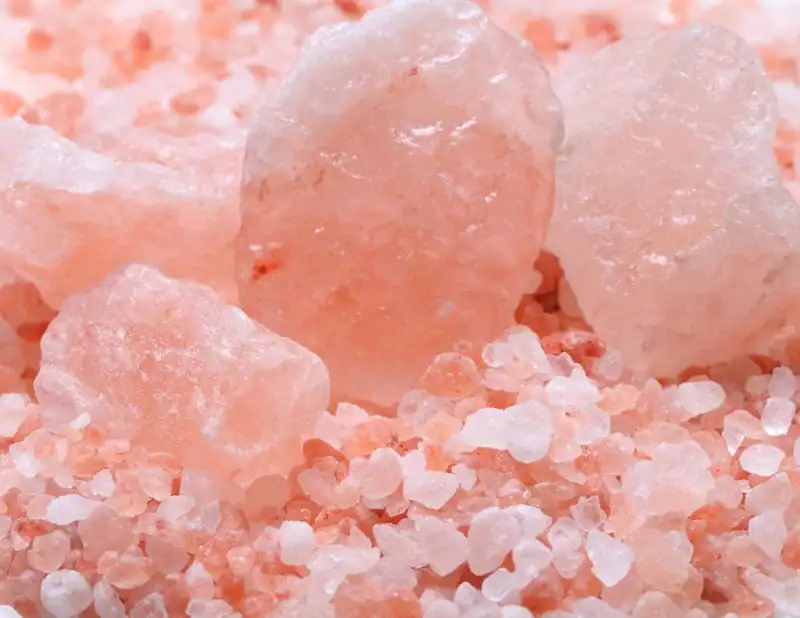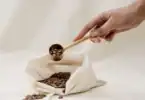Himalayan salt is known for its unique pink color and mineral content that many people love to use in home remedies and cooking. But you may be wondering how long it lasts and if it should be stored in a particular way.
In this article, I’ll explore the shelf life of Himalayan salt, how to preserve its quality and flavor, and what to do with it if it has lost its effectiveness as a seasoning. I’ll also discuss whether it can expire or become stale, and offer tips for determining the quality of your Himalayan salt.
Whether you’re a seasoned Himalayan salt user or new to this versatile ingredient, this blog post has something for you.

Does Himalayan Salt Go Bad?
Like other types of salt, Himalayan salt does not go bad in the sense that it spoils or becomes inedible. However, it may lose its flavor or become less effective as a seasoning over time. As long as it’s kept in a cool, dry place, Himalayan salt should keep its flavor for years.
Storing your salt well … any type of salt, should keep it from becoming clumpy due to moisture absorption. Depending on how and where it is stored, it is possible that it could pick up aromas from other ingredients stored near by, such as garlic.
The salt deposits where we get Pink Himalayan salt from are approximately 500.000 years old. Salt is really not something that “goes bad” on it’s own, but salt shelf life can be affected by it’s environment.
In the last several years, I have seen more salt blend products become available. Any blend that combines Himalayan salt with other flavoring agents such as garlic, chili flakes, herbs like rosemary or spa blends with hibiscus could well have a shorter shelf life. This is dependent on what is added and not because of the salt itself.
Himalayan salt can last for a very long time if it is stored properly. However, it is always a good idea to use your senses (sight, smell, taste) to determine the quality of the salt before using it in your cooking.
How Long Does Himalayan Salt Last?
My observation in all of my experience is that Himalayan salt expiration “is not really a thing”. If stored properly, Himalayan salt can last for decades.
That being said, it is always a good idea to use your senses (sight, smell, taste) to determine the quality of the salt before using it in your cooking. If the salt has a dull or faded color, an off smell, or a weak or bitter taste, it may be past its prime and should be discarded. Poorly refined Himalayan salt may start separating or show signs of grit or tiny pieces of clay – and while this is not necessarily dangerous, it is a reason to just toss it out.
To help extend Himalayan salt shelf life, it is important to store it in a cool, dry place, away from direct sunlight and moisture. Keeping the salt in an airtight container can also help prevent it from absorbing odors or flavors from other ingredients in your pantry. See more details below in the Storage section of this article.

Why Does Salt Have an Expiration Date?
So you may be thinking, if salt never really goes bad, why does it even have an expiration date?
As far as I can tell, anything that is packaged for human consumption, at least in the United States has guidelines set by the Food & Drug Administration (FDA). Package labels need to tell you serving size, the amount of essential nutrients contained in the serving (Sodium in the case of salt), and expiration among other requirements. Consider expiration dates on bottled water as falling into the same area.
How Should I Store Himalayan Salt?
Proper storage is key to preserving the quality and flavor of Himalayan salt. Here are some tips for storing Himalayan salt to help it stay at its best until you can use it all up:
- Store In A Cool, Dry Place – Himalayan salt should be stored in a cool, dry place, away from direct sunlight and moisture. This will help prevent the salt from absorbing moisture and becoming hard or clumpy, which can affect its flavor and the ability to sprinkle it.
- Use An Airtight Container – Keeping the salt in an airtight container can help prevent it from absorbing odors or flavors from other ingredients in your pantry. Airtight containers also help keep the salt dry and protected from moisture.
- Use A Salt Grinder Or Mortar And Pestle – If your salt becomes hard or clumpy, you can try grinding it to a finer consistency using a salt grinder or a mortar and pestle. This can help restore the salt’s effectiveness as a seasoning. I like to always keep some Pink Himalayan Salt in a ceramic grinder so it’s easy to use and the grinder dial can be adjusted to supply the coarseness or fineness of the crystals.
- Dry Out Clumps – If your salt has absorbed moisture and become clumpy, you can try placing it in a sunny spot for a few hours to help it dry out. Alternatively, you can use a food dehydrator or place the salt in an oven set to a low temperature (250°F or lower) for a short period of time.
- Desiccator Packets – If you live in a particularly humid climate then you might have more of a challenge than people that live in dryer areas. I save the desiccator packets that come with vitamins/supplements or when I buy a product like Nori seaweed. These can be reused in your salt storage container (just don’t put them in your salt grinder – that could be bad if you got them caught in the mechanism).
- Old Fashioned Desiccator – If you’ve got finely ground Himalayan salt in a shaker, you can add some rice kernels in the shaker. Rice acts as a natural desiccant and will not affect the flavor of your salt appreciably.
If you can’t find any suitable desiccant packets to reuse, here are some that should work for your salt storage needs:
Small Silica Gel packets are perfect for helping to keep the moisture out of your salt. They contain 5 grams each and are small enough that they should fit in your salt storage containers: 2.3" x 1.7".
Can Himalayan Salt Be Used Past its “Best By” Date?
Generally, while you want to use Himalayan salt soon after you purchase it, the expiration or “best by” date on the packaging may not be a reliable indicator of the salt’s quality or effectiveness. If stored properly, at worst it may lose a little of its flavor or seasoning power but it won’t spoil or go rancid.
If in doubt, use your senses to determine if you should use your salt anymore. If nothing is noticeably wrong about it, it should still be perfectly fine to use. It’s also a good idea to buy smaller quantities just so it gets used up more quickly. We all love Costco, but do we really need a massive drum of Himalayan salt taking up room in the cupboard?
Final Thoughts
Himalayan salt is a natural product and food seasoning that has gained popularity in recent years, and while it doesn’t expire in the sense that it becomes inedible or spoiled, it may lose its flavor, absorb flavors from other food stuffs that it is stored near or become less effective as a seasoning over time.
To help extend its shelf life, it is important to store it in a cool, dry place, away from direct sunlight and moisture, and in an airtight container to prevent it from absorbing odors or flavors from other ingredients. When using any type of salt, it is always a good idea to use your senses (sight, smell, taste) to determine its quality.
Table of Contents
Spoonful of pink salt photo by KaboomPics.
Wondering what pink Himalayan Salt tastes like or how it compares to regular table salt? See our article Comparing The Taste of Pink Himalayan Salt to Regular Salt.








